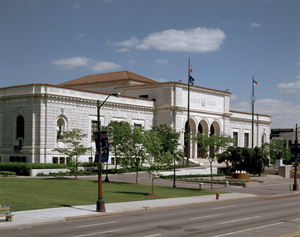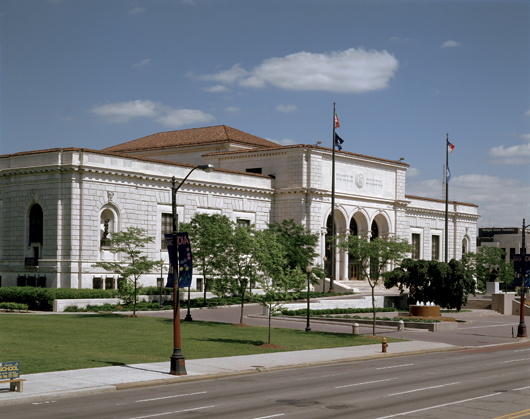
DETROIT (AP) – The Detroit Institute of Arts’ collection could be sold to help satisfy creditors if the financially troubled city of Detroit seeks bankruptcy protection, officials said.
The city’s state-appointed emergency manager Kevyn Orr is considering whether the collection should be considered city assets that could be used to cover Detroit’s long-term debt, the Detroit Free Press reported Friday. That debt is estimated at more than $14 billion.
Orr spokesman Bill Nowling told The Detroit News that Orr told the museum it may face exposure to creditors if Detroit seeks bankruptcy protection. Nowling said the notification is a “precautionary measure” and there’s “no plan on the table to sell any asset of the city.”
“We have no interest in selling art,” Nowling told the Free Press. “I want to make that pretty clear. But it is an asset of the city to a certain degree. We’ve got a responsibility under the act to rationalize that asset, to make sure we understand what’s it’s worth.
“We have to look at everything on the table.”
The DIA said in a statement Friday that it “strongly believes that the museum and the city hold the museum’s art collection in trust for the public.”
“The city cannot sell art to generate funds for any purpose other than to enhance the collection,” the statement said. “We remain confident that the city and the emergency financial manager will continue to support the museum in its compliance with those standards, and together we will continue to preserve and protect the cultural heritage of Detroit.”
The museum said it has hired New York bankruptcy attorney Richard Levin to suggest ways to protect the collection from possible losses. Levin has been involved in bankruptcy case involving General Motors and other high-profile cases.
The city owns the Detroit Institute of Arts’ building and collection, while daily operations are overseen by a nonprofit. The scope of Orr’s power as an emergency manager to sell the collection or any other major assets, such as the city’s water department, likely would be tested in court.
Founded in 1885 and located in the city’s cultural center, the DIA has a collection of more than 60,000 works, including the first Vincent van Gogh painting to enter a U.S. museum and Diego Rivera’s Detroit Industry murals. It displays American, European, modern and contemporary art, as well as significant African, Asian, Native American, Oceanic, Islamic and ancient collections.
The museum doesn’t estimate how much its collection might be worth, and any sale price for specific items would depend on market conditions.
Republican Gov. Rick Snyder in March appointed Orr as emergency manager, giving Orr the final say on Detroit’s fiscal matters. The city’s budget deficit could reach $380 million by July 1, it could run out of cash before the end of the year, and bankruptcy hasn’t been ruled out.
Under a Chapter 9 bankruptcy filing, neither a judge nor creditors can force the city to liquidate its assets, but bankruptcy experts tell the Free Press that a judge and creditors could push for a sale. Some creditors have already asked Orr whether the DIA collection is “on the table,” Nowling said.
The head of New York’s Metropolitan Museum of Art came to the DIA’s defense on Friday, predicting that the “disheartening reports out of Detroit today will undoubtedly shock and outrage the city’s residents.”
“Even in the darkest days of New York City’s fiscal crisis of 1975 and the national economic meltdown of 2008, the cultural treasures closely identified with our own city were never on the table—never considered an asset that might be cashed-in during a crunch to bridge a negative balance sheet,” Met Director Thomas Campbell said in a statement.
Billionaire developer A. Alfred Taubman, a patron of the museum, said that “it would be a crime” to sell any of the DIA’s collection to satisfy city creditors.
“I’m sure Mr. Orr, once he thinks about it, will certainly not choose that as one of the assets,” Taubman said. “It’s not just an asset of Detroit. It’s an asset of the country.”
Copyright 2013 Associated Press. All rights reserved. This material may not be published, broadcast, rewritten, or redistributed.
AP-WF-05-24-13 1801GMT
ADDITIONAL IMAGE OF NOTE


